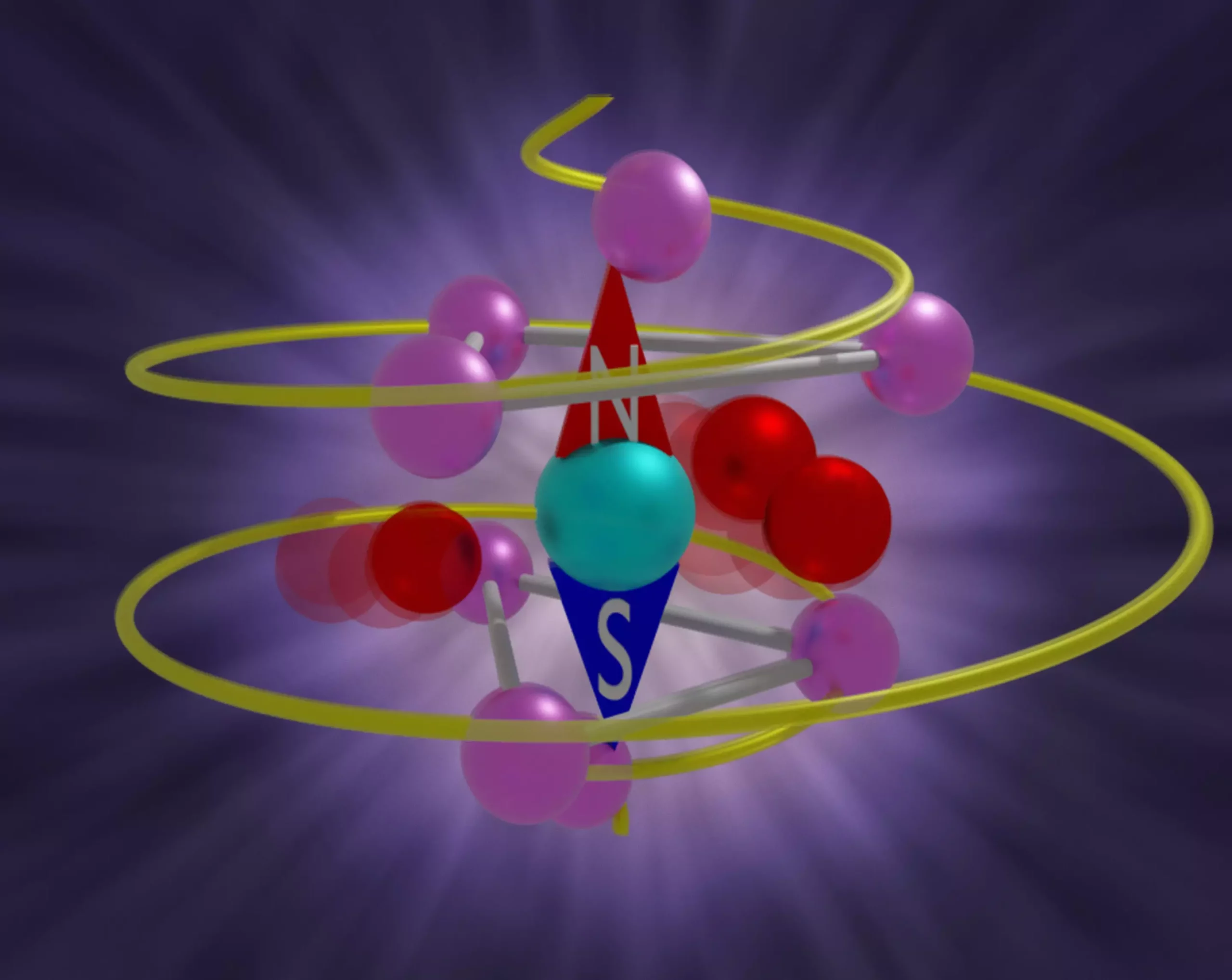Quantum materials hold immense promise for revolutionizing the information systems of the future, offering lightning-fast and energy-efficient capabilities. However, harnessing their transformative potential has proven challenging due to the overwhelming number of atoms in solid materials, which often masks the exotic quantum properties carried by electrons. Despite this obstacle, researchers at Rice University’s lab of quantum materials scientist Hanyu Zhu have made a groundbreaking discovery: by inducing circular movement in atoms, they have unlocked the remarkable power of chiral phonons. This unique atomic vibration transforms crystals into magnets and has the potential to redefine the possibilities of quantum materials.
In a recent study published in Science, Zhu and his team demonstrated that exposing cerium fluoride to ultrafast pulses of light triggers a mesmerizing dance of its atoms. This dance, known as a chiral phonon, momentarily aligns the spins of electrons with the atomic rotation, effectively polarizing them in the absence of a strong magnetic field. Normally, aligning electron spins would require the application of a powerful magnetic field. However, the chiral movement of the atomic lattice achieves the same effect, defying expectations and revealing the intricate interplay between atomic motion and electron behavior.
Traditionally, physicists believed that electrons could immediately adapt to new atomic positions, essentially disregarding their prior trajectory. However, the discovery of chiral phonons challenges this notion, as the collective atomic motion disrupts time-reversal symmetry. Although chiral phonons have been observed experimentally in different materials, their impact on material properties remains poorly understood. Zhu’s team set out to quantitatively measure the effect of chiral phonons on the electrical, optical, and magnetic properties of materials, focusing specifically on the intriguing phenomenon known as spin-phonon coupling.
Spin-phonon coupling plays a crucial role in real-world applications such as data storage on hard disks. Earlier this year, Zhu’s group showcased a captivating instance of spin-phonon coupling in single molecular layers, where linear motion of atoms triggered spin shaking. In their recent experiments, the team needed to induce a chiral motion in a lattice of atoms. This required the selection of the appropriate material and the generation of light pulses at specific frequencies to set the atomic lattice in motion. Through a combination of experimental techniques and theoretical computation, the researchers crafted intense infrared light pulses to interact with chiral phonons and monitored spin and atomic motion with additional infrared pulses.
Unlocking New Frontiers: Future Implications
Beyond the insights gained into spin-phonon coupling, the experimental design and setup employed by Zhu and his team offer a valuable foundation for future studies on magnetic and quantum materials. The ability to quantitatively measure the magnetic field generated by chiral phonons could pave the way for the development of experimental protocols aimed at unraveling novel physics in dynamic materials. By further investigating the potential of chiral phonons, researchers may unlock groundbreaking applications and continue pushing the boundaries of quantum materials and their uses in technology.
The discovery of the transformative power of chiral phonons in quantum materials opens up a realm of possibilities for the future of information systems. This research highlights the surprising impact of atomic motion on electron behavior and challenges conventional notions of time-reversal symmetry. With further exploration and understanding of spin-phonon coupling, scientists could harness the unique properties of quantum materials to unlock entirely new frontiers in technology and propel humanity into a new era of innovation.



Leave a Reply